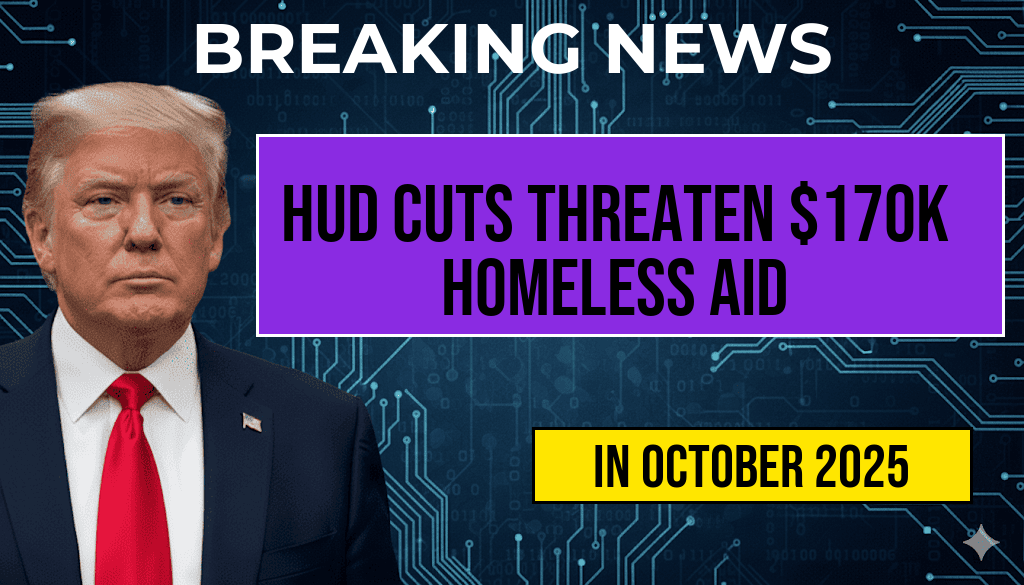Recent reductions in federal housing funding threaten to significantly exacerbate the homelessness crisis across the United States, with the Department of Housing and Urban Development (HUD) slashing its budget from approximately $3.3 billion to just $1.1 billion. This sharp decline, representing over a 60% cut, jeopardizes critical programs designed to provide affordable housing, emergency shelter, and supportive services to vulnerable populations. The potential fallout includes an estimated increase of up to $170,000 in homelessness-related costs annually and a surge in homelessness rates nationwide. As state and local agencies grapple with these reductions, advocates warn that the diminished federal support could undermine decades of progress in addressing housing insecurity, leaving many without shelter and increasing strain on already overstretched emergency services.
The Scope of Funding Cuts and Their Immediate Impacts
Decreased Allocations and Program Reductions
| Year | Budget (in billions) |
|---|---|
| 2019 | $3.3 |
| 2020 | $3.2 |
| 2021 | $2.5 |
| 2022 | $1.8 |
| 2023 | $1.1 |
The budget reductions announced for FY 2023 translate into fewer resources for programs that assist individuals experiencing homelessness. These include emergency shelter funding, supportive housing grants, and initiatives aimed at preventing homelessness before it begins. With the new budget, states and localities face difficult choices, often forcing reductions in services or delays in new housing projects.
Projected Rise in Homelessness and Economic Strain
Experts estimate that the funding cuts could lead to an increase of approximately 15-20% in homelessness rates over the next year, depending on regional economic conditions and existing housing shortages. This surge could translate into thousands of additional individuals and families living without stable shelter, further straining healthcare, law enforcement, and social services.
According to data from the Department of Housing and Urban Development, the costs associated with homelessness—such as emergency room visits, law enforcement interventions, and temporary shelter expenses—can reach upwards of $170,000 per individual annually. An increase in homelessness rates could therefore impose an additional burden of hundreds of millions of dollars on local and federal budgets.
Underlying Causes and Broader Context
Affordable Housing Shortages and Economic Factors
The decline in federal funding coincides with ongoing housing affordability issues that have worsened over the past decade. Rising rents, stagnant wages, and a persistent shortage of affordable units have left many vulnerable to homelessness, especially in major metropolitan areas like Los Angeles, New York, and Seattle. The COVID-19 pandemic further exacerbated these issues, causing income losses and delays in housing development.
According to the U.S. Census Bureau, rental prices increased by over 20% in certain urban centers since 2019, outpacing income growth for most households. This widening gap underscores the critical importance of federal support, which now faces substantial reductions.
Policy Debates and Federal Priorities
The budget cuts reflect broader shifts in federal housing policy, with some policymakers prioritizing other areas of spending amid economic pressures. Critics argue that these reductions undermine efforts to eradicate chronic homelessness and hinder progress toward affordable housing goals set by the Biden administration, which previously pledged to reduce homelessness by 25% over four years.
Advocates for affordable housing warn that without sustained federal investment, local governments will struggle to meet the needs of their most vulnerable residents. They also highlight the importance of innovative solutions, such as increased public-private partnerships and zoning reforms, to address the systemic issues contributing to homelessness.
Responses from Stakeholders and Future Outlook
Local Government and Advocacy Group Reactions
Many city officials and homelessness advocates have voiced concern over the budget reductions. The National Alliance to End Homelessness issued a statement emphasizing that “federal funding is crucial for the success of local efforts to prevent and end homelessness,” and called for increased support rather than cuts.
Some local jurisdictions are exploring alternative funding sources, including state programs, philanthropic grants, and community-led initiatives. However, these efforts are often limited in scope and unable to fully compensate for federal reductions.
Potential Policy Options and Recommendations
Experts suggest several strategies to mitigate the impact of decreased federal funding:
- Enhancing coordination between federal, state, and local agencies to maximize resource efficiency.
- Implementing targeted prevention programs to reduce the inflow into homelessness.
- Encouraging private sector investment in affordable housing developments.
- Expanding emergency relief efforts to support those most at risk during the current crisis.
Policy analysts also advocate for a reevaluation of federal priorities, emphasizing that investing in housing stability yields long-term economic and social benefits, including reduced healthcare costs and increased workforce participation.
Looking Ahead
The federal government’s decision to significantly reduce HUD funding underscores the urgent need for comprehensive strategies to address homelessness. Without adequate resources, efforts to provide safe, affordable housing are likely to falter, potentially reversing years of progress. As communities brace for an anticipated rise in homelessness, coordinated action involving policymakers, private partners, and community organizations will be essential to prevent a worsening crisis.
For more on homelessness trends and federal policy initiatives, visit Wikipedia’s page on homelessness in the United States or review recent reports from Forbes.
Frequently Asked Questions
What is the main reason behind the reduction in HUD funding for homelessness programs?
The primary reason for the funding cut is a significant decrease in the allocated budget, reducing from $3.3 billion to $1.1 billion, which threatens the sustainability of homelessness assistance initiatives.
How does the funding reduction impact homelessness services?
The cut in funding jeopardizes the ability of organizations to provide essential housing, support, and resources to homeless individuals, potentially leading to increased homelessness and related social issues.
What are the potential consequences of losing $170,000 in funding?
Losing $170,000 could result in fewer programs, reduced outreach, and diminished support services, making it more challenging to address and prevent homelessness effectively.
Who is most affected by these HUD funding cuts?
Homeless individuals, families, and vulnerable populations who rely on HUD-funded programs are most at risk, facing decreased access to vital housing assistance and supportive services.
Are there any proposed solutions or actions to counteract these funding cuts?
Stakeholders are advocating for additional funding, policy changes, and community-based initiatives to mitigate the impact of the cuts and ensure continued support for homelessness prevention and intervention efforts.







